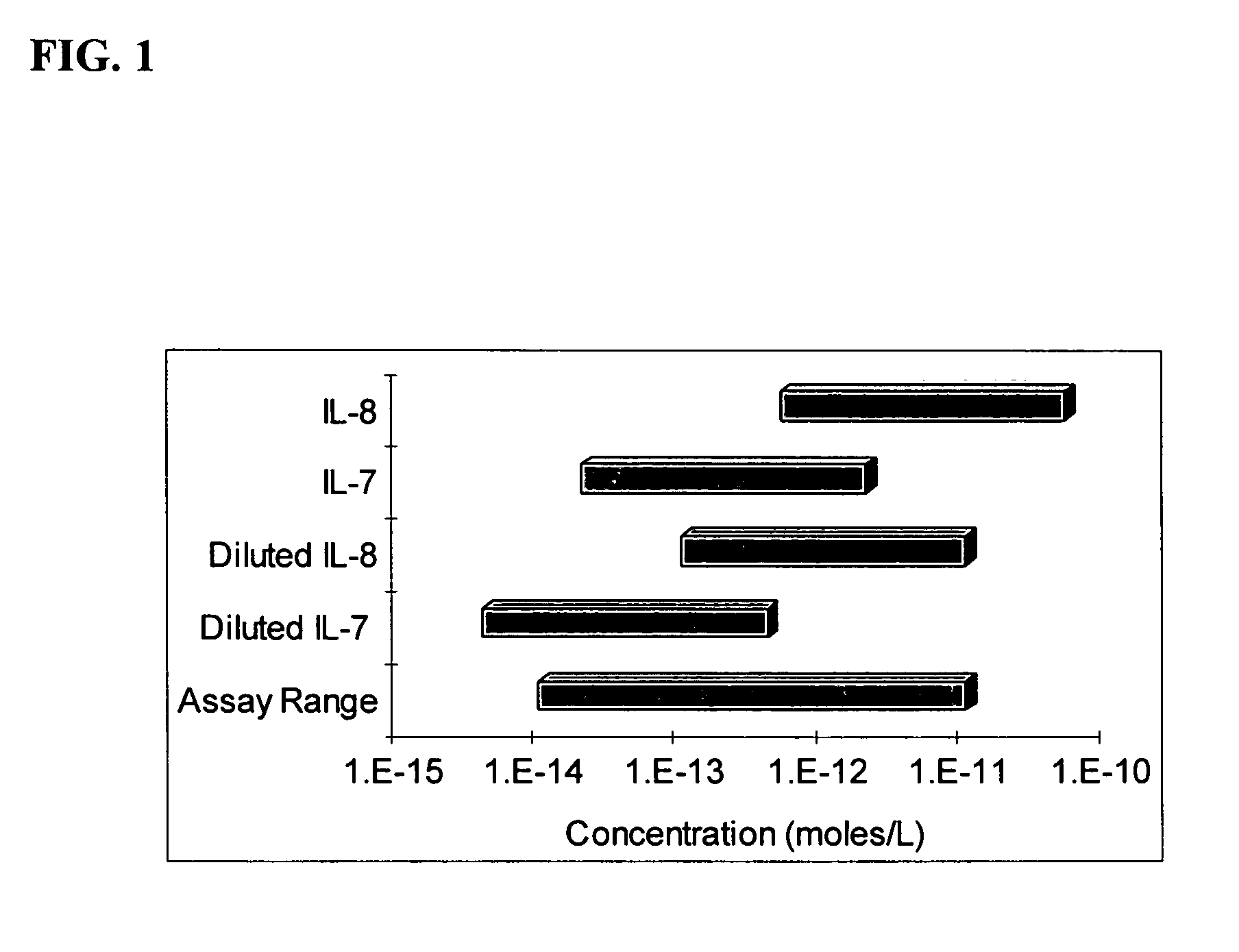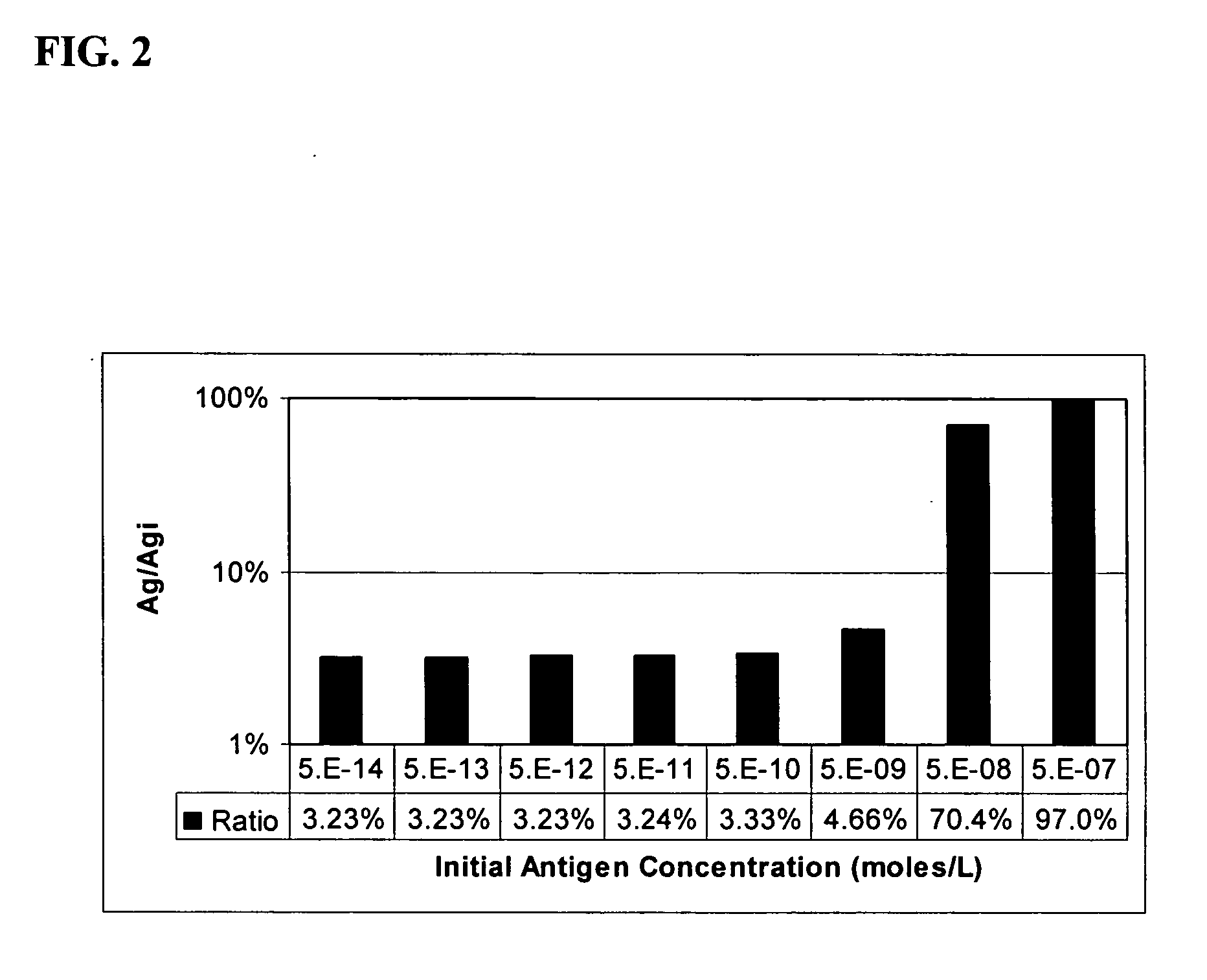Method of adjusting the working range of a multi-analyte assay
a multi-analyte assay and working range technology, applied in the direction of instruments, material analysis, measurement devices, etc., can solve the problems of false positives, limited sample volume available for testing, and inability to multiplex assay methods such as elisa plates and lateral flow assays can also be automated, so as to reduce the available analyte concentration
- Summary
- Abstract
- Description
- Claims
- Application Information
AI Technical Summary
Benefits of technology
Problems solved by technology
Method used
Image
Examples
example
[0102] Results of a multi-analyte assay using the method of the invention are shown in FIGS. 13-16. A set of multiplexed assays of five antigens (IL-1B, IL-2, IL-6, IL-7 & TNFα) were run over an analyte concentration range of 50 pg / ml-500,000 pg / mL. The analyte molar concentrations can be calculated from the molecular weights of the antigens as follows:
AntigenMolecular WeightIL-1B17KDIL-215KDIL-620.3KDIL-717KDTNFα17.5KD
[0103] After benchmarking the basic performance of the assays, the IL-1B antigen concentrations were scaled by adding scaling anti-IL-1B. The response to IL-1B was significantly reduced while the others remained substantially unchanged.
[0104] Varied concentrations of five cytokines were spiked into serum and measured using a multiplexed immunoassay. The baseline of the five-plex assay is shown in FIG. 13. The baselines for four of the cytokines assayed (IL-1B, IL-2, IL-6 & TNFα) saturate at the high end of the concentration range. The fifth analyte, the cytokine IL...
PUM
 Login to View More
Login to View More Abstract
Description
Claims
Application Information
 Login to View More
Login to View More - R&D
- Intellectual Property
- Life Sciences
- Materials
- Tech Scout
- Unparalleled Data Quality
- Higher Quality Content
- 60% Fewer Hallucinations
Browse by: Latest US Patents, China's latest patents, Technical Efficacy Thesaurus, Application Domain, Technology Topic, Popular Technical Reports.
© 2025 PatSnap. All rights reserved.Legal|Privacy policy|Modern Slavery Act Transparency Statement|Sitemap|About US| Contact US: help@patsnap.com



